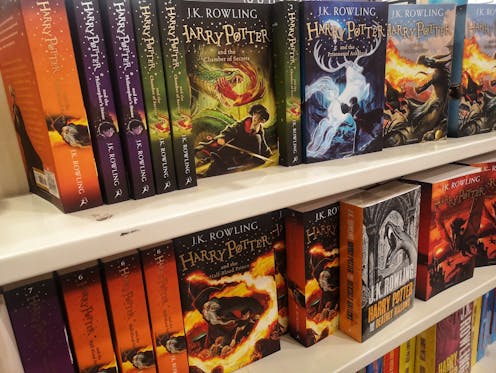What makes a book a bestseller? It’s tricky
- Written by Agata Mrva-Montoya, Lecturer, Department of Media and Communications, University of Sydney

It is a truth generally acknowledged that authors and publishers want their books to become bestsellers. Bestseller lists, especially those published in prestigious media outlets, such the New York Times, or publishing industry magazines are important marketing tools for publishers, and useful selection tools for booksellers, librarians and readers.
An appearance on a New York Times bestseller list is a major coup for a book and its author. Even if, as economist Alan Sorensen contends, “appearing on the list leads to a modest increase in sales for the average book”, the benefit is “more dramatic for bestsellers by debut authors”, who are more likely to secure contracts for new books and become recognisable brands.
Hence bestsellers – and bestseller lists – have two functions: economic on the one hand, and ideological or social on the other. Their role is to make money for authors, publishers and retailers. But they also mirror prevailing cultural and societal norms. They can influence public discourse and foster a shared reading experience.
Yet the “bestseller” remains a contentious and uncertain concept. The New York Times lists, for example, are based on sales figures reported by thousands of stores of all sizes and demographics from the United States and key online vendors of ebooks. Bestsellers are grouped in multiple categories, with some categories of books excluded.
But how the lists are compiled is not entirely clear. The methodology has been defended as “a secret both to protect our product and to make sure people can’t try to rig the system”. Yet there is some evidence that gaming the system does sometimes occur.
Best of the worst?
On one level, the definition of a “bestseller” is simple: it is a book that appears on a list because it has sold the greatest number of copies in a given, usually short, time. How many copies a book needs to sell to become a blockbuster depends on the time of the year and the size of market. The stakes are the highest in the weeks leading up to Christmas, when book sales spike.
A book can claim “bestselling” status after one week on a list. Similarly, an author can be called a “New York Times bestselling author” for life if they have written a book that appeared on the list for just one week.
But books can sell well over different time frames. There are “fast sellers” – that is, those with large short-term sales. There are “bestsellers” with large long-term sales. And there are “steady sellers”, which have moderate sales over a longer period of time.
Only the fast sellers and bestsellers are visible in weekly and monthly bestseller lists; the steady sellers are not. The latter can only be identified by looking at longer-term sales trends. Books by Jane Austen, for example, have been selling steadily since the 1920s.
Read more https://theconversation.com/what-makes-a-book-a-bestseller-its-tricky-233092





